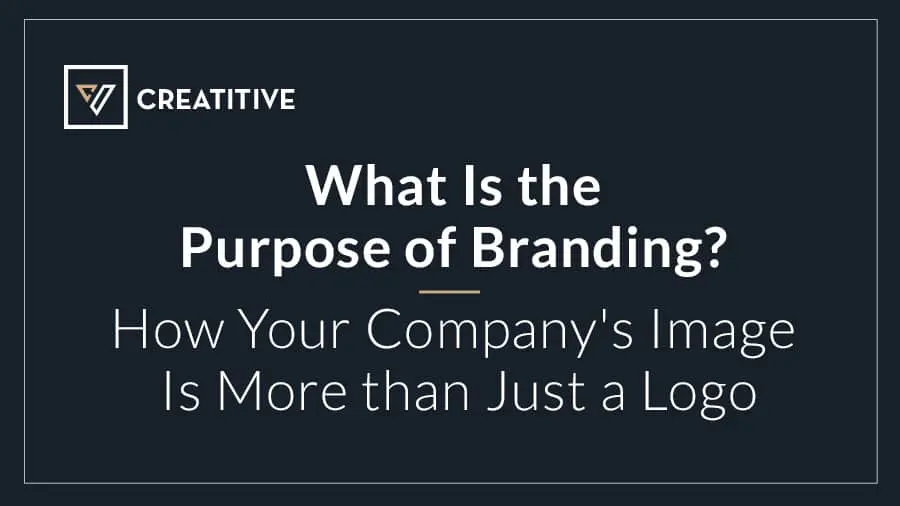

A lot more goes into a business’s branding than you’d first believe. On the outside, you may think of your brand as simply the logo, icons, and colors, but your brand identity is the entire identity of your business. Your brand is also the tone, personality, and overall feel. It’s the way consumers see you—the tangibles and the intangibles.
Branding has always been an important business component, but it may be more critical now than ever before with modern technology. Thanks to social media, consumers are exposed to new brands each day. This provides significant benefits to consumers who have plenty of options and can do their due diligence, making it much more challenging for businesses to stand out.
There’s a tremendous amount of competition in the marketplace. Hence, businesses need to go the extra mile. Business owners should invest in creating a solid brand that will get and keep people’s attention. With the right brand strategy, you have the opportunity to land the right audience at the right time and convert them into loyal customers.
Let’s explore the purpose of branding, from crafting a clear vision to connecting with consumers and creating a lasting legacy.
The Purpose of Branding in Marketing


Branding has always been a vital part of business, but it may be more critical now than ever before. With social media, consumers get exposed to new brands every day. This can be great for consumers who have plenty of options and can research the best one, but it makes it harder for businesses.
A brand exists as a promise a business makes to its consumers. The purpose of a brand position in marketing is to establish trust within your consumers and create loyalty. A good brand purpose gives your buyers a way to remember you, creates an identity for your business, and sets you apart from competitors.
One of the most apparent reasons businesses need a clear brand position is to help them get recognized more often. Suppose you have a robust brand for your business, with a clear focus, perceived value, and the ability to make a positive social impact. In that case, people will naturally take note of it much more than they would a brand without these components. A brand that doesn’t have cohesive branding isn’t going to stay in a customer’s mind for very long.
Additionally, you must make each customer interaction memorable. This means that your marketing must stand out from competitors, showcase why your products or services solve problems, and connect with them on multiple levels, primarily on an emotional level.
An excellent example is Coca-Cola. They’ve found great success amongst their market audience, focusing on their individual consumers worldwide. Take their “Share a Coke” campaign. Launching in 2011 with focus groups in the Australian market, Coca-Cola placed popular names on their infamous soft drink bottles.
This personalized campaign went on to fuel interactive billboards, custom orders, and a photo contest and drove sales to the moon. The brand’s identity is strengthened thanks to its’ custom product packaging.
Why did this happen?
Simple. The brand focused on evoking pride in their key demographic, placing greater meaning on their product, and impacting society by creating value for consumers. It was an excellent idea and a feat of marketing that ultimately spread around the world, making money and inspiring exploration amongst brand supporters as they searched for their name—what a powerful brand purpose example.
The Difference Between a Logo & Brand
While the two are often confused, there is a clear difference between a logo and a brand. A logo is just one element of a brand. It’s a simple icon or visual that often represents the value of a brand and differentiates it from competitors.
Meanwhile, a brand is composed of multiple elements, some tangible (logos, graphics, colors, etc.) and some that are intangible (persona, emotion, positioning, etc.). While a brand may use an icon to represent its business in some instances, it is not the sole element that establishes a company’s image and identity.
To make more money, dive deeper into your brand, and identify the important factor that will set you apart, you must go beyond an icon. You must do some soul searching on how to make a positive impact. You must identify your brand purpose.
What Makes a Brand Successful: Clear Brand Purpose


What makes a brand great and not just good is its ability to access its audience effectively. Yes, a brand should be unique and evoke an emotional response from its target audience. Still, it should also have a high level of exposure and remain consistent across all social channels.
At Creatitive, when we brand a new client and provide our services, whether they’re a small business, athlete, entrepreneur, or in another market, we don’t just give them an icon and call it a day (unless that’s really what they want). We consider all aspects of the brand through discovery, tangible and intangible.
We create brand guidelines that include colors, fonts, and an icon. Still, we also consider other touchpoints that a potential customer will have, such as print materials, a website, packaging, etc. We believe that a consistent brand image and the success of a brand in its target market are only possible if a strong brand has clear brand promise and purpose.
Instead of simply focusing on the little things that high-performing brands do, spend significant time building a solid foundation for consumers.
What is Brand Purpose?


Brand purpose is the brand’s reason for existing and what your brand stands for. Yes, brand purpose is different from the brand promise, despite their similarity.
Your brand purpose is the core of everything that it does. Your brand values, down to your brand communications with your customer, are determined by your brand’s purpose.
It provides potential customers a clearer idea of who your brand is, what it wants to do, and why they should care.
One great example of a clear brand purpose is the handmade cosmetic company from England, Lush!
The brand Lush is well-known for its operational excellence, belief-driven buyers, ‘we believe’ purpose and active efforts in shedding light on controversial topics such as animal testing. Despite not having any global advertising policy, the brand cultivated a strong following from the next generation.
Lush connected with its consumers worldwide by offering real value and more significant meaning to their purchases, thanks to its clear brand purpose.
Great Brand Purpose Examples
When some people think of excellent brand purpose, there’s only a handful of examples that they can give, such as Apple. We’ve listed some great brands outside of this to help you better understand what purpose-driven brands look like.
Each brand holds to its purpose and values, from its employees to its customer service, focusing on reducing fossil fuels and tackling each controversial topic with grace and understanding.
Crayola’s Brand Purpose
Their brand purpose left a positive impression on both parents and teachers, positioning them as a critical element to kids’ learning process.
Muji’s Brand Purpose
Known as a brand that delivers functional and streamlined products, Muji’s simple and practical products are a great representation of their purpose!
Muji’s brand purpose is all about promoting simplicity and moderation. And their actual product showcases just the same thing.
Learn More About Brand Strategy & Brand Vision
Behind great, purpose-driven brands are a well-thought-out, creative content marketing strategy. While an icon is an essential part of establishing your identity, it’s only one piece of an enormous puzzle. In this case, that puzzle is your brand, and there are many parts involved to make sure you maximize customer acquisition, retention, and return.
Each company must seek to understand their customers, their pain points, their employees, and improve society.







